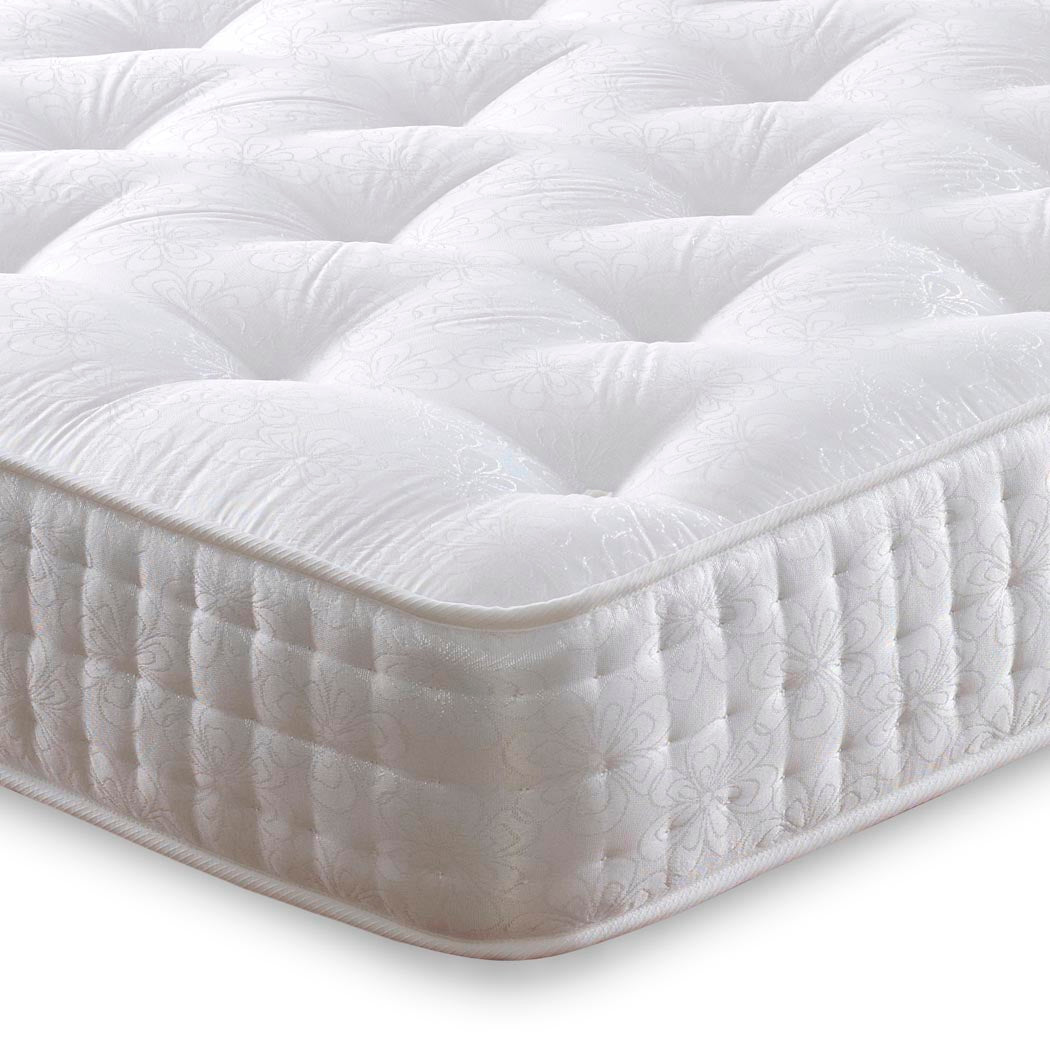Your bag is empty
Mattresses
Experience unrivalled comfort and support with a premium yet affordable mattress from Comfybedss. We offer a top selection of mattresses for all c...


Hypoallergenic
Cronus Open Coil Mattress
£99.99
£199.98
Save
£99.99
Spread the cost and pay in 3 interest free payments
Delivered in 2-7 days


Hypoallergenic
Cupid Open Coil Mattress
£109.99
£219.98
Save
£109.99
Spread the cost and pay in 3 interest free payments
Delivered in 2-7 days


Test for 30 Nights
Nike Open Coil Mattress
£139.99
£279.98
Save
£139.99
Spread the cost and pay in 3 interest free payments
Delivered in 2-7 days


Test for 30 Nights
Zoya Open Coil Mattress
£139.99
£279.98
Save
£139.99
Spread the cost and pay in 3 interest free payments
Delivered in 2-7 days


Test for 30 Nights
Lakonia Open Coil Mattress
£159.99
£319.98
Save
£159.99
Spread the cost and pay in 3 interest free payments
Delivered in 2-7 days


Test for 30 Nights
Morpheus Open Coil Mattress
£159.99
£319.98
Save
£159.99
Spread the cost and pay in 3 interest free payments
Delivered in 2-7 days


Test for 30 Nights
Orion Open Coil Mattress
£159.99
£319.98
Save
£159.99
Spread the cost and pay in 3 interest free payments
Delivered in 2-7 days


Test for 30 Nights
New Midas Open Coil Mattress
£159.99
£319.98
Save
£159.99
Spread the cost and pay in 3 interest free payments
Delivered in 2-7 days


Test for 30 Nights
Hades Open Coil Mattress
£159.99
£319.98
Save
£159.99
Spread the cost and pay in 3 interest free payments
Delivered in 2-7 days


Test for 30 Nights
Hermes Open Coil Mattress
£159.99
£319.98
Save
£159.99
Spread the cost and pay in 3 interest free payments
Delivered in 2-7 days


Test for 30 Nights
Stress Free Open Coil Mattress
£164.99
£329.98
Save
£164.99
Spread the cost and pay in 3 interest free payments
Delivered in 2-7 days


Test for 30 Nights
Aphrodite Open Coil Mattress
£169.99
£339.98
Save
£169.99
Spread the cost and pay in 3 interest free payments
Delivered in 2-7 days


Test for 30 Nights
Ares Memory Open Coil Mattress
£179.99
£359.98
Save
£179.99
Spread the cost and pay in 3 interest free payments
Delivered in 2-7 days


Test for 30 Nights
Hera Orthopaedic Open Coil Mattress
£179.99
£359.98
Save
£179.99
Spread the cost and pay in 3 interest free payments
Delivered in 2-7 days


Test for 30 Nights
Super Orthopaedic Open Coil Mattress
£179.99
£359.98
Save
£179.99
Spread the cost and pay in 3 interest free payments
Delivered in 2-7 days


Test for 30 Nights
Adonis Orthopaedic Open Coil Mattress
£179.99
£359.98
Save
£179.99
Spread the cost and pay in 3 interest free payments
Delivered in 2-7 days


Test for 30 Nights
Zeus Orthopaedic Open Coil Mattress
£179.99
£359.98
Save
£179.99
Spread the cost and pay in 3 interest free payments
Delivered in 2-7 days


Test for 30 Nights
Entice Memory Foam And Spring Mattress
£179.99
£359.98
Save
£179.99
Spread the cost and pay in 3 interest free payments
Delivered in 2-7 days


Test for 30 Nights
Jubilee 1000 Pocket Sprung Mattress
£199.99
£399.98
Save
£199.99
Spread the cost and pay in 3 interest free payments
Delivered in 2-7 days


Test for 30 Nights
Pegasus Open Coil Mattress
£199.99
£399.98
Save
£199.99
Spread the cost and pay in 3 interest free payments
Delivered in 2-7 days


Best Seller
Sophie Classic Memory Foam Mattress
£199.99
£349.98
Save
£149.99
Spread the cost and pay in 3 interest free payments
Delivered in 2-7 days


Test for 30 Nights
Titan Open Coil Mattress
£209.99
£419.98
Save
£209.99
Spread the cost and pay in 3 interest free payments
Delivered in 2-7 days


Test for 30 Nights
Windsor Orthopaedic Mattress
£209.99
£419.98
Save
£209.99
Spread the cost and pay in 3 interest free payments
Delivered in 2-7 days


Test for 30 Nights
Buckingham Coil Sprung Mattress
£209.99
£419.98
Save
£209.99
Spread the cost and pay in 3 interest free payments
Delivered in 2-7 days
Everything You Need For A Cosy Night Sleep
Frequently Asked Questions
Whether you’re buying your first bed or upgrading to something new, we make the process smooth from start to finish. And whenever you need us, our team’s right here to guide you.
What Is The Best Mattress?
Which Mattress Is Best For Back Pain?
How Long Do Mattresses Last?
What Size Mattress Do I Need?
What Are The Different Mattress Types?
Featured Articles
See All Posts
Size Guide
Bed & Mattress Sizes Guide
Our easy UK bed and mattress size guide helps you find the perfect fit for your room and lifestyle. Clear dimensions, helpful tips and who each size suits best – all in one place.

Assembly Guide
How to Assemble A Divan Bed
Assembling a divan bed is much easier than most people expect. With the base arriving in two simple halves and only a few steps to follow, you can have your new bed ready in minutes. In this guide, we explain how to attach the feet, join the base together, fit your headboard and get everything sitting level, so you can enjoy better sleep and extra storage without any stress.

Mattress Guide
How to Choose the Right Mattress
Finding the right mattress can feel confusing, but this simple guide makes it much easier. Learn about mattress sizes, firmness levels, popular mattress types and when it is time to replace your old one. Discover how to choose a mattress that gives you better comfort, better support and better sleep with ComfyBedss.

Sleep Science
What Happens to Your Body When You Sleep?
A good night’s sleep does far more than help you feel rested. While you are asleep, your body is hard at work repairing muscles, restoring energy, balancing hormones and clearing mental clutter. It acts as your built in reset button, helping you wake up feeling clearer, calmer and more prepared for the day ahead. Understanding what happens during sleep can help you improve the way you rest and the way you feel.

